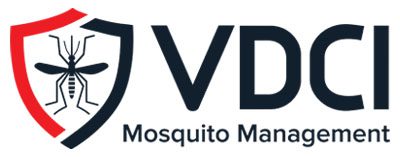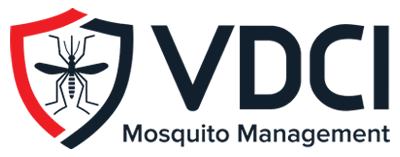Deep Dive Into Common Mosquito-Borne Diseases
There are really only two reasons to control mosquitoes; to avoid nuisance biting, and to preclude the spread of mosquito-borne disease. Everyone recognizes that mosquitoes can be a terrible blood feeding nuisance, but many people do not realize the magnitude of the health threat that they represent globally. Some of the world’s most deadly diseases are carried and transmitted by mosquitoes. It is estimated that up to a million people die every year from mosquito-borne illness with many countries around the world ravaged by malaria, yellow fever, and dengue-hemorrhagic fever. What is the history and what are the current local cases of mosquito-borne disease in the U.S.?
Malaria: The World's Deadliest Mosquito-Borne Disease has a History in the U.S.
Malaria is a disease caused by a Plasmodium parasite and is the leading cause of mosquito-borne deaths throughout the world. In the past, local malaria cases were reported within the U.S. It wasn’t until after 1950 that malaria was considered eliminated from the country, due to large-scale mosquito control efforts and swamp drainage. While the disease is not currently a threat, one of the primary carriers of the disease parasite in the pre-1950s U.S. – is far from eliminated. Anopheles quadrimaculatus (also known as the Common Malaria Mosquito) is distributed throughout the eastern United States, often occurring in huge numbers in the southeastern states, especially along the Gulf of Mexico. This fact reinforces the importance of robust surveillance and disease testing programs in areas where the species inhabits.

What Mosquito-Borne Diseases are in the U.S.?
In more recent years, West Nile virus, several types of encephalitis, and dog heartworm have been the primary mosquito-borne diseases in the U.S. Additionally, Zika virus, dengue fever, and chikungunya have emerged over the past couple of years as threats to human health in the United States, South America, and the Caribbean.
What is Mosquito-Borne Encephalitis?
Mosquito-borne encephalitis can be a severe result of many viruses vectored by mosquitoes. In the U.S., it is geographically wide-spread and is prevalent in several forms: West Nile virus (WNV), La Crosse encephalitis (LAC), eastern equine encephalitis (EEE), Jamestown Canyon virus (JCV), and several others. Encephalitis is an inflammation of the brain and central nervous system and is characterized by a high to moderate mortality rate, with some survivors left with permanent physical and mental disabilities.
West Nile Virus: #1 Mosquito-Borne Disease Threat in the U.S.
West Nile virus, which in severe cases can cause encephalitis, entered the U.S. along the east coast in 1999 and has had serious ongoing implications for the rest of North America as it has spread across the country. 47 out of 50 states and the District of Columbia reported West Nile virus infections in people, birds, or mosquitoes in 2017.
WNV is typically transmitted to humans by mosquitoes that have previously fed upon an infected bird. While over 150 species of mosquitoes have been known to carry WNV, the primary vector species in the U.S. are Culex pipiens, Culex tarsalis, and Culex quinquefasciatus. These mosquitoes are all active at night, and most cases of infection occur during the summer months. Approximately 20% of people affected by WNV will experience flu-like symptoms including fever, headache, nausea, muscle pain, and swollen lymph glands. Other symptoms may include a stiff neck, rash, sleepiness or disorientation. In severe cases, an individual can develop West Nile Encephalitis or Meningitis, which can lead to coma, tremors, convulsions, paralysis, and even death.
2003 was the largest WNV outbreak in the U.S. with 9,862 cases reported and 264 deaths. 2012 was the deadliest year for WNV in the U.S., with 286 deaths reported to the CDC. West Nile virus is a concern in North American bird populations and remains the #1 mosquito-borne disease threat to humans in the U.S., with over 46,000 cases reported between 1999-2016.
Chikungunya: A Human Virus
WNV, EEE, LAC, and a few other mosquito-borne encephalitis viruses have an animal reservoir and cannot be transmitted from human to mosquito. Chikungunya is a human virus. Mosquitoes become infected when they feed on a person already infected with the virus and then spread the virus by feeding on other humans. Because of this ability, the virus has the potential to spread quickly, especially in urban areas with larger populations. The virus first reached the Americas in 2013, with local cases reported in the U.S. in Florida (2014) and Texas (2015).
Dengue Virus: Enjoying Urban Environments
Dengue virus, another human virus, is transmitted by certain Aedes mosquitoes. On a global level, the virus is considered a significant threat as our world’s urban landscapes grow. Beyond the increase in desirable habitats for the container-breeding species, the virus has four strains (multiple serotypes) making it complicated for medical professionals to manage. Chikungunya virus shares similar symptoms to dengue and provides those bitten with immunity from future chikungunya infections. Unfortunately, with multiple strains of dengue, an individual is more likely to be hospitalized or die if infected with more than one serotype. Dengue is considered under reported or misclassified. The World Health Organization posted an update on the virus globally, citing research1 that estimates the real number of dengue infections could be close to 390 million annually.
The United States has experienced local cases of dengue in Florida, Hawaii, and near the Texas-Mexico border. Larger outbreaks have occurred within U.S. Territories, including Puerto Rico, the U.S. Virgin Islands, and U.S.-affiliated Pacific Islands.
Heartworm Disease: Infecting Our Four-Legged Friends

In addition to human cases of mosquito-borne disease, there is a growing concern for pet owners. Dirofilaria immitis, commonly referred to as heartworm, is a parasitic roundworm that infects a variety of mammals. Heartworm is found throughout the world and has been reported in all states in the U.S. The natural host is dogs. Infection in dogs can lead to heartworm disease and, if left untreated, severe physical damage and death may occur. Fortunately, for felines, most worms in cats don’t survive to the adult stage. Prevention is an option, for both dogs and cats, and should be discussed with your veterinarian. Although isolated human infections have been reported, heartworm is not currently recognized as a human health problem.
Mosquitoes Abundant and Problematic
As an individual, if you’ve ever been driven inside by biting mosquitoes or have chased the pesky invaders around the bedroom in the middle of the night, you may consider 1 or 2 mosquitoes – too many. When mosquitoes become abundant and problematic, there becomes an even greater need for control efforts. Hurricanes, such as Harvey and Irma in 2017, have the ability to create vast areas of standing water that produce extreme mosquito populations and make the already difficult disaster relief efforts even harder and more dangerous. With or without a natural disaster, economic losses can be considerable for businesses or travel destinations that are considered uninhabitable or unsuitable due to unmanaged environments creating large populations of one of nature’s deadliest and least popular creatures – the mosquito.
1 Bhatt S, Gething PW, Brady OJ, Messina JP, Farlow AW, Moyes CL et.al. The global distribution and burden of dengue. Nature;496:504-507.
Contact Us to Learn More About Effective Mosquito Prevention Strategies:
 Since 1992, Vector Disease Control International (VDCI) has taken pride in providing municipalities, mosquito abatement districts, industrial sites, planned communities, homeowners associations, and golf courses with the tools they need to run effective mosquito control programs. We are determined to protect the public health of the communities in which we operate. Our mosquito control professionals have over 100 years of combined experience in the field of public health, specifically vector disease control. We strive to provide the most effective and scientifically sound mosquito surveillance and control programs possible based on an Integrated Mosquito Management approach recommended by the American Mosquito Control Association (AMCA) and Centers for Disease Control and Prevention (CDC). VDCI is the only company in the country that can manage all aspects of an integrated mosquito management program, from surveillance to disease testing to aerial application in emergency situations.
Since 1992, Vector Disease Control International (VDCI) has taken pride in providing municipalities, mosquito abatement districts, industrial sites, planned communities, homeowners associations, and golf courses with the tools they need to run effective mosquito control programs. We are determined to protect the public health of the communities in which we operate. Our mosquito control professionals have over 100 years of combined experience in the field of public health, specifically vector disease control. We strive to provide the most effective and scientifically sound mosquito surveillance and control programs possible based on an Integrated Mosquito Management approach recommended by the American Mosquito Control Association (AMCA) and Centers for Disease Control and Prevention (CDC). VDCI is the only company in the country that can manage all aspects of an integrated mosquito management program, from surveillance to disease testing to aerial application in emergency situations.

